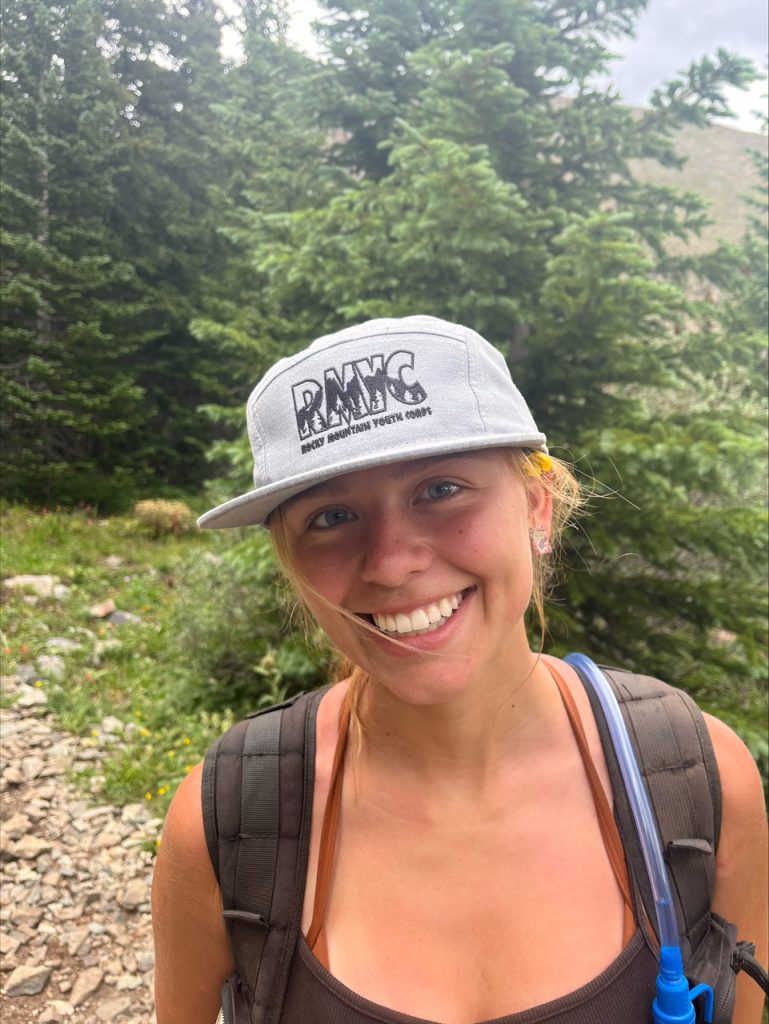Get Wild: The trail doesn’t build itself
Get Wild

U.S. Forest Service/Courtesy photo
Before starting my summer on a conservation corps, I thought I loved all things nature; I would have lived under a rock if it meant I could be one with nature. Then, I was fortunate enough to spend 10 straight weeks living outside. I fully realized the horrible combination that is a broken sleeping pad, trying to set up or pack up my tent in the middle of a rainstorm and accidentally sleeping on a downward slant. While becoming one with stunning Alpine lakes, beautiful mountain peaks, and wildlife (from afar), I also became one with blisters, bug bites and (minutes before writing this) a snake cuddled up in my backpack.
Up until this week I have been jumping around Colorado thinning forests, clearing burn scars and building riparian animal habitats, using my saw dubbed “Lone Wolf Mcquade.” This week, and for the next two, I find myself in Summit County on my first trail-work project building check steps on one of Summit County’s most popular destinations — Meadow Creek Trail.
An important anti-erosion measure, check steps require digging trenches by hand, using a pick mattock, crushing endless rocks into golf-ball sized pieces to secure the beams and prevent compaction and pounding stabilizing rebar (long metal rods) through the beams into the soil and rock combination below. Introduction of 27 check steps will significantly improve this already beautiful, steep trail, making it safer for public enjoyment.
Most people hiking Meadow Creek Trail won’t realize how easily the trail could unravel without these important structures. Check steps work like a hidden defense system. By flattening steep sections and giving hikers a clear, secure path, check steps help keep feet where they should be and water where it’s supposed to go. The steps slow runoff, redirect water into more sustainable channels and prevent erosion from turning trails into muddy ravines. In sensitive areas, especially near wetlands, this protection is everything. We sometimes joke that we’re just hauling rocks around in the woods and, honestly, some days that’s what it feels like — but the work we do matters.
Wetlands are some of the most biologically rich and carbon-storing environments on Earth. Once damaged, they’re incredibly difficult to restore. By keeping trails well-built and defined, we’re not just helping hikers. We’re helping the entire web of life that thrives when these ecosystems are left intact.
Early one morning, as we hiked up the trail to work, the sky was pink, everything was silent aside from our labored breathing, and a moose stepped onto our path. We stood frozen. It felt like the trail wasn’t just a place for people anymore, but part of a shared home.
Before becoming a trail builder, I never gave much thought to the trails I hiked. Now, I can’t hike without seeing the enormous amount of work put into every foot of trail, from the careful angle in a switchback to the layered structure hidden beneath a check step. I also see the impact that people have, both good and bad. A single off-trail shortcut or a bit of trash can compromise hours of work put into making the trail better.
This experience has made me realize that loving the outdoors also means taking responsibility for it. Not everyone has the time to spend their summer digging trenches and clearing forests, but everyone can help protect our public lands. Stay on the trail. Pack out what you pack in. Thank the volunteers and crews you pass. The public lands we share are so special. It’s up to all of us to keep them that way.
Get Wild” publishes weekly in the Summit Daily News. Kyreland Nolan (Kiki) is a rising sophomore at Middlebury College, studying environmental chemistry and singing for her a capella group, “The Paradiddles.” She is currently working on the Disaster Relief Conservation crew for Rocky Mountain Youth Corps. Originally, she is from Wisconsin and lives with her two dogs, Maggie and Teddy.


Support Local Journalism

Support Local Journalism
As a Summit Daily News reader, you make our work possible.
Summit Daily is embarking on a multiyear project to digitize its archives going back to 1989 and make them available to the public in partnership with the Colorado Historic Newspapers Collection. The full project is expected to cost about $165,000. All donations made in 2023 will go directly toward this project.
Every contribution, no matter the size, will make a difference.








